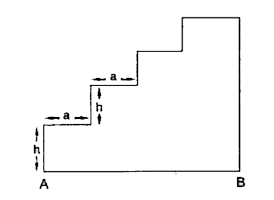The number of molecules that react with each in an elementary step gives a measure of the
order of the reaction
molecularity of the reaction
stoichiometry of the reaction
activation energy of the reaction
The correct Answer is:B
Elementary reactions are classfied according to their molecularity. The number of reacting species (atoms, molecules or ions) taking part in an elementary reaction, which must colllide simultaneously in order to bring about a chemical reaction is called molecularity of a reaction.
Topper's Solved these Questions
- BOOK - R SHARMACHAPTER - CHEMICAL KINETICSEXERCISE - Follow-up 420videos
CHEMICAL KINETICS
- BOOK - R SHARMACHAPTER - CHEMICAL KINETICSEXERCISE - Follow-up 512videos
CHEMICAL KINETICS
- BOOK - R SHARMACHAPTER - CHEMICAL KINETICSEXERCISE - Follow-up 210videos
CHEMICAL KINETICS
- BOOK - R SHARMACHAPTER - BIOMOLECULESEXERCISE - Archives47videos
BIOMOLECULES
- BOOK - R SHARMACHAPTER - CHEMISTRY IN EVERYDAY LIFEEXERCISE - Archives11videos
CHEMISTRY IN EVERYDAY LIFE
Similar Questions
Knowledge Check
- Question 1 - Select One
The number of molecules of the reactants taking part in a single step of the reaction tells about. :
Amolecularity of the reactionBmechanism of the reactionCorder of reactionDall of the above - Question 2 - Select One
Assertion (A): Elementary reactions have same value of order and molecularity.
Reason (R): Molecularity is the number of molecules that participate in the reaction, while order is an experimental quantity.ABoth A and R are true and R is the correct explanation for ABBoth A and R are true but R is NOT the correct explanation of ACA is true but R is falseDA is false and R is true - Question 3 - Select One
Maximum number of molecules of CH3I that can react with a molecule of CH3NH2 are
A3B4C2D1
The number of water molecules coordinated to each monovalent cation in alum is
View SolutionThe number of reacting species taking part in an elementary reaction which must collide simultaneously in order to bring about a chemical reaction is called?
View SolutionDetermining the overall reaction and the molecularity of an elementary reaction : The following two - step mechanism hqas proposed for the gas-phase decomposition of nitrous oxide (N2O) :
Step 1: N2O(g)→N2(g)+O(g)
Step 2: N2O(g)+O(g)→N2(g)+O2(g)
(i) Write the chemical equation for the overall reaction
(ii) Identify any reaction intermediates
(iii) What is the molecularity of each of the elementary reactions ?
(iv) What is the molecularity of the overvall reaction
Strategy : The step-by -step pathway by which a reaction occurs is called its mechanism. Some reactions takes place in a single step, but most reactions occur in a series of elementary steps. To identify intermediates and molecularity, look at the indicidual stepsView SolutionFigureshows a number of equal steps. If the 'rise' of each step is h cm, are there are n steps, make a formula for the height (H) in centrimeters of the steps.
 View Solution
View SolutionWhen two molecules of NaOH react with one molecule of sulphuric acid, one molecule of …………. and ……….. molecules of water are formed.
View Solution

